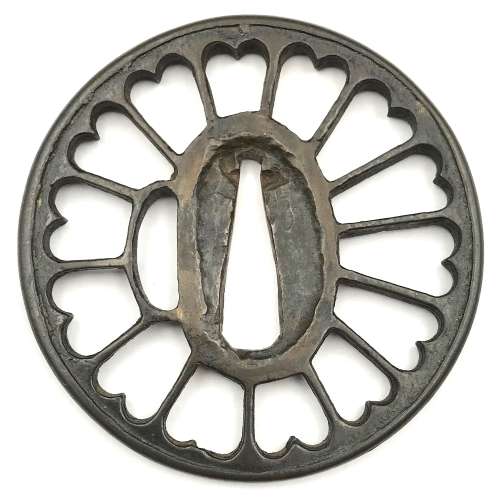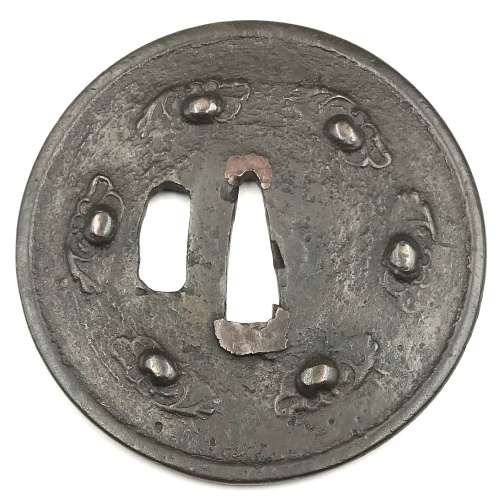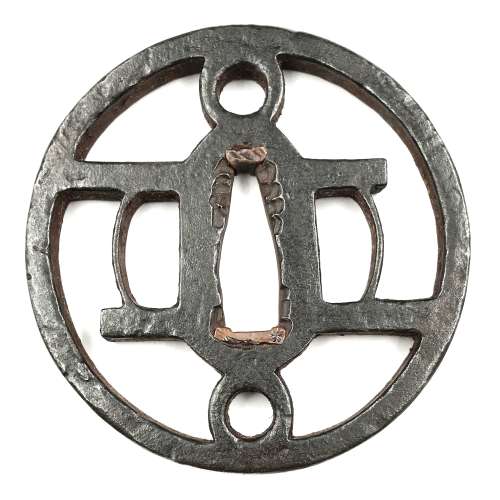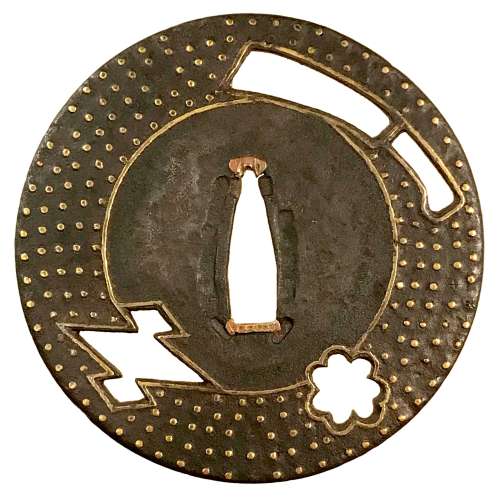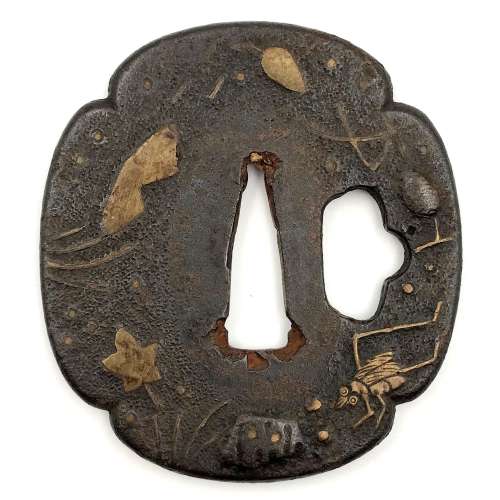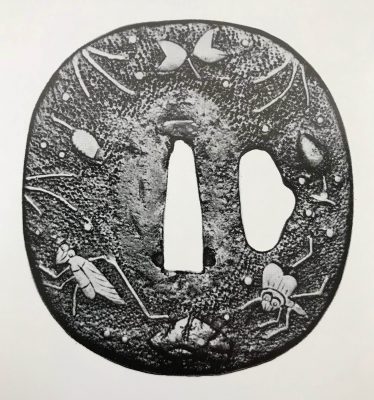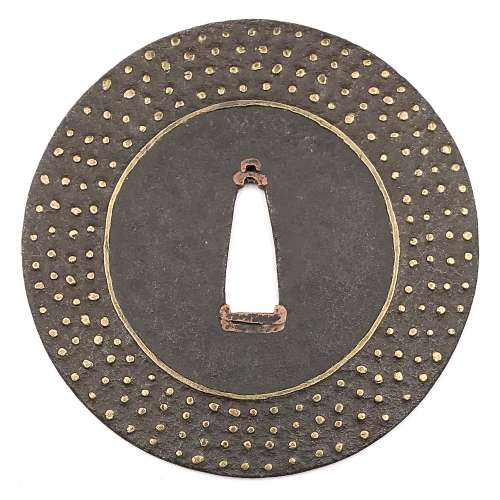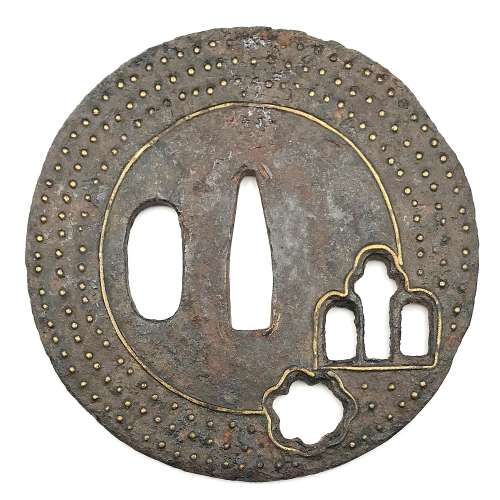Iron tsuba of round form with design of iris and snowflake in openwork (ko-sukashi or small cut-outs) outlined with brass wire. Three concentric rows of brass dots (
ten-zōgan), with a brass circular line inside the innermost row of dots (missing on the back). Hitsu-ana is not outlined with brass wire, which let us suppose that it was cut out at a later date.
Iron and brass.
Ko-sukashi and
ten-zōgan technique. Mid Muromachi period (1454-1513).
Height: 74.0 mm, Width: 73.6 mm, Thickness: 3.0 mm.
NBTHK certification of 1968: "Kicho". Condition is relatively poor: rust, missing inlay, scratches.
While representation of the snowflake is rather standard, the meaning of the other cut-out design was initially less clear. Similar symbol was found at (1) "Kokusai Tosogu Kai, International Convention & Exhibition, September 24-25, 2005, The Frazier Historical Arms Museum, Louisville, Kentucky, USA"; on page 21 there is a photograph J-6 of a
ko-tosho tsuba with "iris theme openwork"; (2) Japanese Swords and Tsuba from the Professor A. Z. Freeman and the Phyllis Sharpe Memorial collections. Sotheby's, London, Thursday 10 April 1997; page 11, lot 6 - a
ko-katchushi tsuba of early
Muromachi period fith "simple design of stylized iris". In both sources the symbol is explained as 'iris" (
kakitsubata).

Freeman and Sharpe collections. Sotheby's, 1997.

Kokusai Tosogu Kai, September 24-25, 2005.
 The design is referenced in LIB-1359.2017 Japanese Swords and Tsuba from the Professor A. Z. Freeman and the Phyllis Sharpe Memorial collections, Sotheby's, London, Thursday, 10 April 1997; p. 18, item 37: "pierced with two large formalised butterflies..."
The design is referenced in LIB-1359.2017 Japanese Swords and Tsuba from the Professor A. Z. Freeman and the Phyllis Sharpe Memorial collections, Sotheby's, London, Thursday, 10 April 1997; p. 18, item 37: "pierced with two large formalised butterflies..."



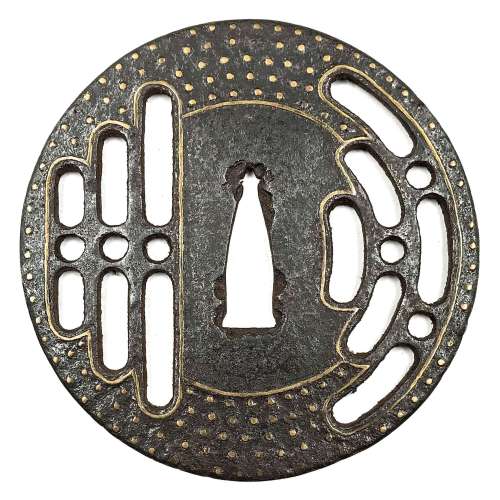


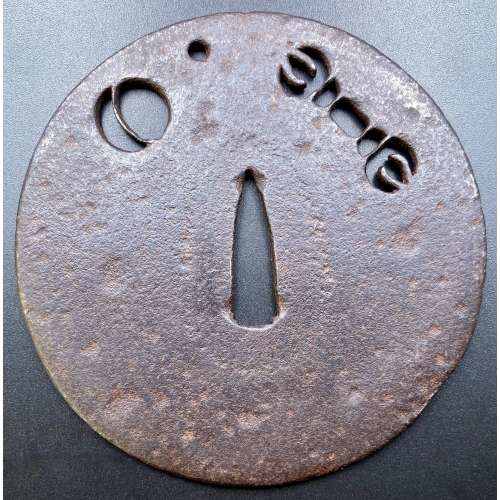
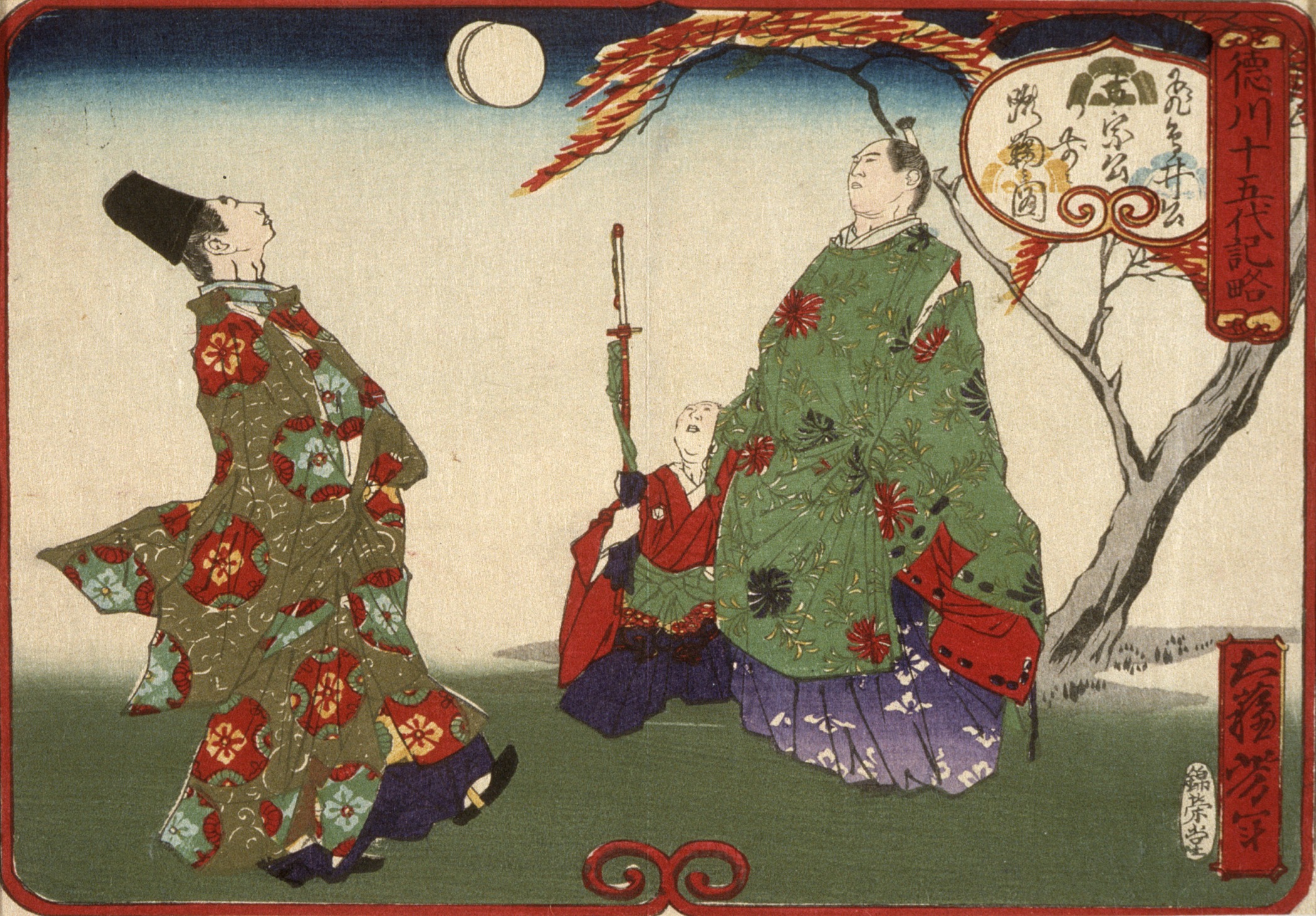
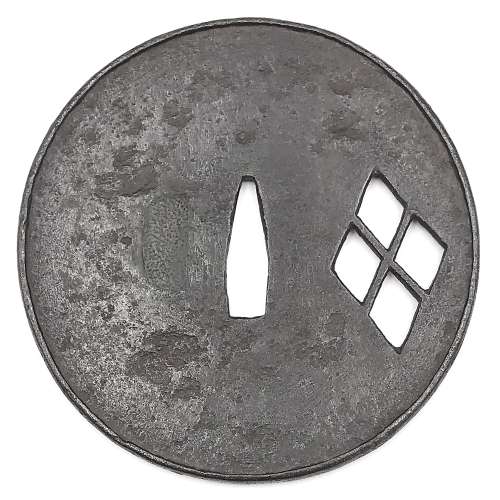
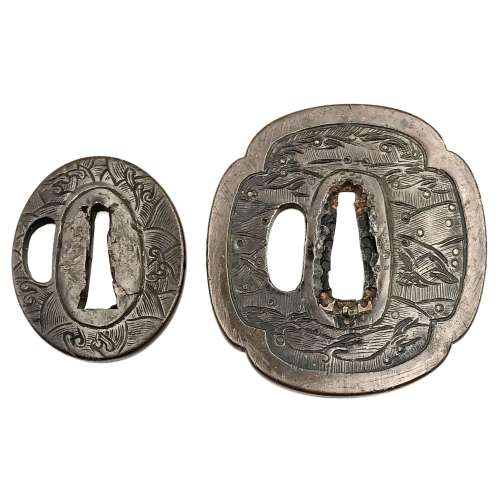
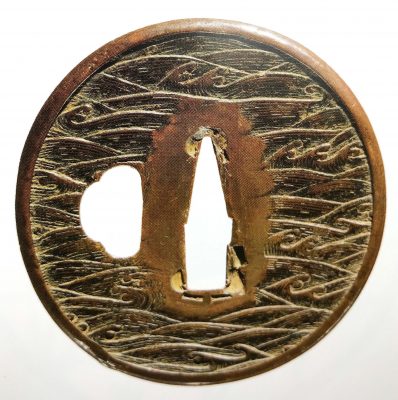


 English translation of the book indicated above Nihon Tō Kōza, Volume VI, Part 1 by Harry Afu Watson, AFU Research Enterprises, Inc., 1993. Tsuba in question illustrated on page 14 and described as follows: " Tsuba mumei Ōnin. Tetsu ji maru gata ko-sukashi tsuchime shitate shinchū suemon ten zogan maru mimi. Brass suemon". My question remains: why such a text is called 'translation' while it looks more like transliteration of romanization?
English translation of the book indicated above Nihon Tō Kōza, Volume VI, Part 1 by Harry Afu Watson, AFU Research Enterprises, Inc., 1993. Tsuba in question illustrated on page 14 and described as follows: " Tsuba mumei Ōnin. Tetsu ji maru gata ko-sukashi tsuchime shitate shinchū suemon ten zogan maru mimi. Brass suemon". My question remains: why such a text is called 'translation' while it looks more like transliteration of romanization? 